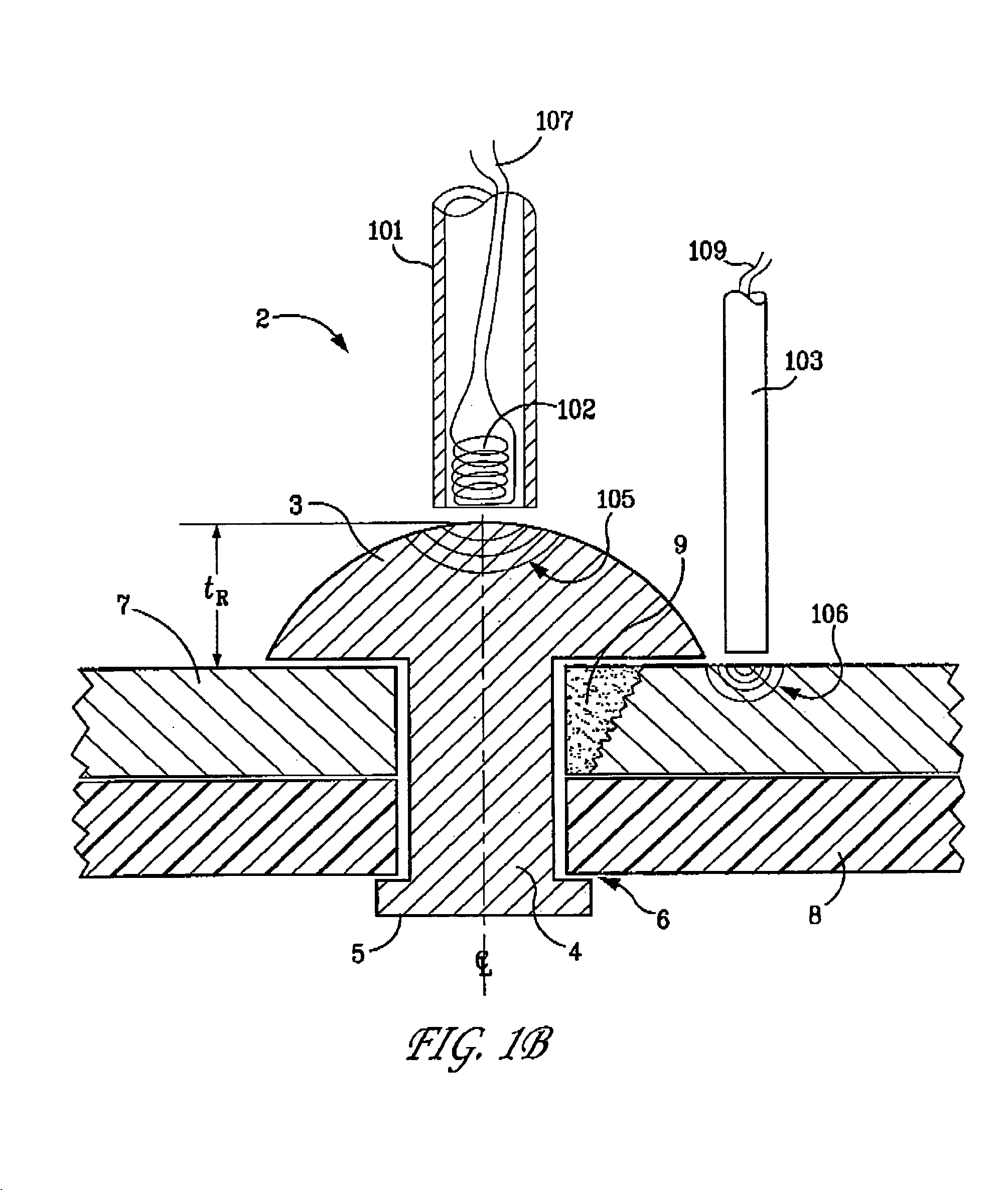Rotating concave eddy current probe
a concave eddy current and eddy current probe technology, applied in the direction of magnetic property measurement, instruments, material magnetic variables, etc., can solve the problems of weak eddy current flowing deeper in the material, lag in phase, and uneven distribution of eddy currents induced by ec probe test coils, etc., to overcome inspection impediments.
- Summary
- Abstract
- Description
- Claims
- Application Information
AI Technical Summary
Benefits of technology
Problems solved by technology
Method used
Image
Examples
Embodiment Construction
[0039]The term “rivet” is broadly defined herein to mean any type of “raised head” fastener. Thus, the term “rivet” includes screws, bolts, carriage bolts, stove bolts, solid rivets, blind rivets, multi-grip rivets, grooved rivets, tubular rivets, etc. The term “raised head” includes the following shapes: round head, universal head, brazier head, flat head, rounded head, domed head, pan head, pan head with chamfered outer edge, button head, truss head, cheese head, fillister head, socket head, countersunk with a rounded top, etc. These shapes are typically axisymmetric with respect to the fastener's central axis of revolution (centerline). Metals commonly used for raised head fasteners include steel, aluminum, titanium, brass, bronze, nickel alloys, etc. The term “non-conducting” means non-electrical conducting. The term “rotating eddy current probe means that the probe body is rotatable (i.e., can be rotated) during inspection around the central axis of the raised head rivet, eithe...
PUM
 Login to View More
Login to View More Abstract
Description
Claims
Application Information
 Login to View More
Login to View More - R&D
- Intellectual Property
- Life Sciences
- Materials
- Tech Scout
- Unparalleled Data Quality
- Higher Quality Content
- 60% Fewer Hallucinations
Browse by: Latest US Patents, China's latest patents, Technical Efficacy Thesaurus, Application Domain, Technology Topic, Popular Technical Reports.
© 2025 PatSnap. All rights reserved.Legal|Privacy policy|Modern Slavery Act Transparency Statement|Sitemap|About US| Contact US: help@patsnap.com



